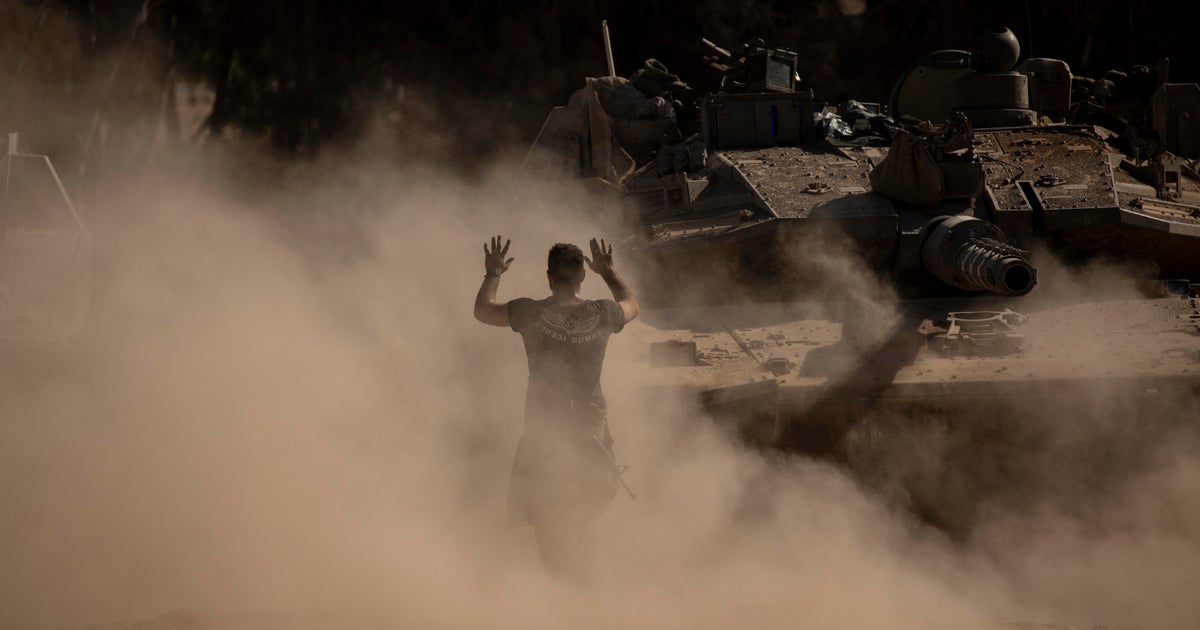Israel said it targeted Hamas’ shadowy military commander in a massive strike Saturday in the crowded southern Gaza Strip that killed at least 90 people including children, according to local health officials. Hamas immediately rejected the claim that Mohammed Deif was targeted.
Israeli officials confirmed that he and a second Hamas commander, Rafa Salama, were the targets. In a statement Saturday night, Israeli Prime Minister Benjamin Netanyahu said “there is no absolute certainty yet” that Deif and Salama were killed in the attack.
The strike took place in an area Israel’s military had designated as safe for hundreds of thousands of Palestinians.
Deif is believed by many to be the chief architect of the Oct. 7 attack that killed some 1,200 people in southern Israel and triggered the Israel-Hamas war. Second only to Hamas’ top official in Gaza, Yahya Sinwar, Deif has not been seen in public for years, has long topped Israel’s most-wanted list and is believed to have escaped multiple Israeli assassination attempts. On Oct. 7, Hamas issued a rare voice recording of Deif announcing the “Al Aqsa Flood” operation.
Abdel Kareem Hana / AP
If Deif has been killed, cease-fire talks could be derailed by what would be seen as a major Israeli victory in the nine-month war.
“These false claims are merely a cover-up for the scale of the horrific massacre,” Hamas said in a statement in response to Israel.
Saturday’s attack was one of the war’s deadliest. The Gaza Health Ministry reported 90 dead and at least 300 others injured. Associated Press journalists counted over 40 bodies at overwhelmed Nasser Hospital nearby. Witnesses described an attack that included several strikes.
“A number of victims are still under the rubble and on the roads, and ambulance and civil defense crews are unable to reach them,” the Health Ministry said.
The Israeli military asserted that “additional terrorists hid among civilians” and described the location as surrounded by trees and several buildings. An Israeli official said the strike hit a fenced area of Khan Younis that was run by Hamas, saying it was not a tent complex but an operational compound. The official described the strike as precise. The army said the compound belonged to Salama.
Footage of the aftermath showed a huge crater, charred tents, burnt-out cars and household belongings scattered across the blackened earth. Victims were carried on the hoods and in the hatchbacks of cars, and on donkey carts and carpets.
Witnesses said the strike landed inside Muwasi, the Israeli-designated safe zone that stretches from northern Rafah to Khan Younis. The coastal strip is where hundreds of thousands of displaced Palestinians have fled to in search of safety, sheltering mostly in sweltering, makeshift tents and with little services.
“This was designated as a safe zone filled with people from the north,” said one displaced Palestinian man who did not give his name. “Children were all martyred here. We collected their pieces with our hands.” He estimated there were seven or eight missiles and asserted that first responders were targeted as well.
At the hospital, a baby in a pink shirt, her face covered with sand, cried while receiving first aid. A small boy lay motionless at the other end of the bed, one shoe gone. Victims lay amid spattered blood on the floor, and bodies were wrapped in white plastic scrawled in marker with their names.
There was “the overwhelming stench of blood,” said Louise Wateridge, a spokesperson with the U.N. agency for Palestinian refugees who visited the hospital and spoke with several patients. Staff said there were no cleaning products left.
The blast threw a 2-year-old child into the air and the mother was missing, Wateridge said. Another boy had his feet blown off, while an 8-year-old boy was killed. “They told me to go there to be safe,” his grieving mother told her of the area struck.
Deif has been in hiding for more than two decades and is believed to be paralyzed. One of the only known images of him is a 30-year-old ID photo released by Israel. Even in Gaza, only a handful of people would recognize him.
Days ago, a blistering Israeli airstrike on a school sheltering displaced Palestinians in southern Gaza. The attack killed at least 29 people at the Al Awda school in Khan Younis, according to an official at the nearby al-Nasser Hospital.
Meanwhile, U.S., Egyptian and Qatari mediators continue to push to narrow gaps between Israel and Hamas over a proposed deal for a three-phase cease-fire and hostage release plan in Gaza.
The U.S.-backed proposal calls for an initial cease-fire with a limited hostage release and the withdrawal of Israeli troops from populated areas in Gaza. At the same time, the two sides will negotiate terms of the second phase, which is supposed to bring a full hostage release in return for a permanent cease-fire and complete Israeli withdrawal from Gaza.
In his statement Saturday, Netanyahu said he “will not budge a millimeter from the outline” that President Biden presented back in March.
Israel launched its campaign in Gaza after Hamas’ Oct. 7 attack in which militants stormed into southern Israel and abducted about 250 people.
Since then, Israeli ground offensives and bombardments have killed more than 38,400 people in Gaza and wounded more than 88,000, according to the territory’s Health Ministry. The ministry does not distinguish between combatants and civilians in its count.
More than 80% of Gaza’s 2.3 million people have been driven from their homes, and most are now crowded into squalid tent camps, facing widespread hunger.





















Discussion about this post